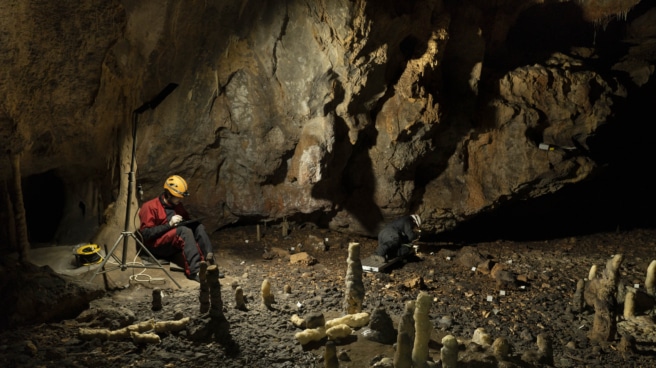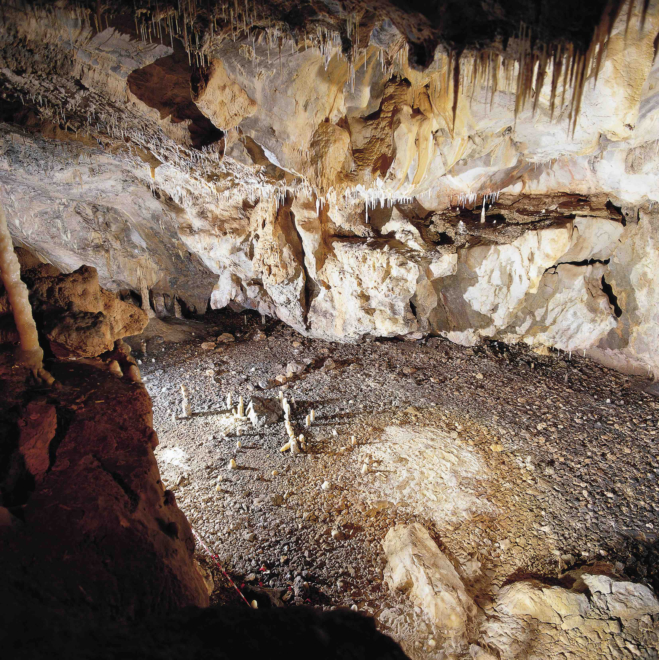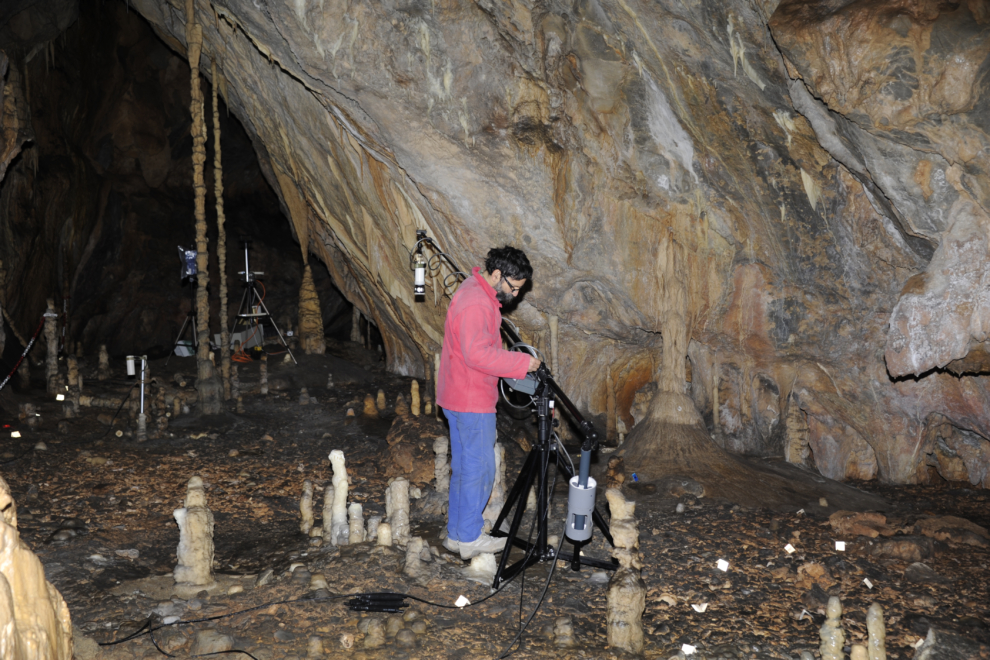

La Garma research team members Carlos García-Noriega and Rodrigo Portero take notes in Cantabria, where they discovered one of the best-preserved Paleolithic dwellings in the world.
He team of archaeologists from La Garma discovered last Thursday in Cantabria one of best preserved Paleolithic dwellings world: one hut built 16,800 years agoin which he documented thousands of objects showing what the daily life of the hunter-gatherers who inhabited it was like.
The team is led by professor of prehistory Pablo Arias and director of the Museum of Prehistory and Archeology of Cantabria Roberto Ontañon, who presented the results of this research at the National Archaeological Museum in Madrid.
Since 1996, both of them have led, with financial support from the Cantabrian government, exploration of the archaeological complex of La Garmawhich contains a large collection of rock art declared by UNESCO as a World Heritage Site.
In addition, in 2021 it received the Palark Foundation National Award for Archeology and Paleontology for hosting a world-unique site for documenting the lifestyles, rituals and symbolism of Paleolithic groups in its lower gallery and one of the sequences. the most extensive and complete cultural heritage of prehistoric Europe in the cave system, the Cantabrian government recalls in its statement.
The Palark Foundation supported the latest work that allowed document a Paleolithic hut in detail which occupies a space of five square meters, bounded by a number of stone blocks and stalagmites, anchoring to the ground a structure of sticks and skins, leaning against the eaves of the cave wall.

As the researchers explained, a small fire burned in the center of this prehistoric hut, and around it were discovered remains of the daily activities of its inhabitants: making stone, horn and bone tools, processing game or working with animal skins.
Unique piece
A total of 4,614 objects were documented, mostly bones from deer, horses and bison, but also 600 pieces of flintassegais, needles, “protoharpoon” and remains of shells of marine mollusks.
In addition to items associated with their existence, several pendants were discovered that they wore as ornament and decorated bonesamong which stands out a pierced phalanx of an auroch with an engraved image of the same animal and a human face, which, according to the La Garma team, is a unique work of the European Paleolithic.
Documenting this Middle Magdalene habitat required two years of continuous work by an interdisciplinary team led by Arias and Ontañon, using an innovative methodology based on the use of non-invasive techniques.

The study involved researchers from the Institute of Prehistoric Research of Cantabria, as well as researchers from the universities of La Rochelle, York, Toulouse, Salamanca, Oxford and the Conseil Superior de la Recherche Scientifique.
It is planned that a copy of this design will be installed in the building in the near future. exhibition area of the Rock Art Center of Cantabriain Puente Viesgo, project leaders announced.
In addition, on February 15, both will present the results of this project at a conference to be held in National Archaeological Museum.
At the presentation of the results they were accompanied by the director of the Palark Foundation, Caroline Baer Vollenweider; Director of the National Archaeological Museum Isabel Izquierdo and project researchers Rodrigo Portero and Carlos García-Noriega.
Source: El Independiente